In the heart of Malaysia, in the peninsular part of the country that won us over so long ago, lies Taman Negara, a 130-million-year-old rainforest that spans three states: Kelantan, Terengganu and Pahang. The national park, which protects the flora and fauna of what is claimed to be the oldest jungle in the world, has the village of Kuala Tahan as the starting point for exploration.
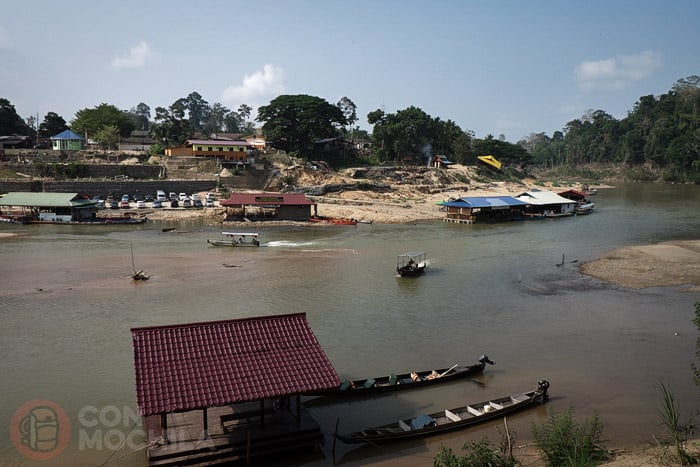
We arrived at this extremely hot town for the first time after almost ten hours travelling from Cameron Highlands, which included a minivan, a bus, hours of waiting and a long boat ride along the Sungai Tembeling River. You can get there by land, but the journey is pleasant despite the heat and helps you get into the swing of things.
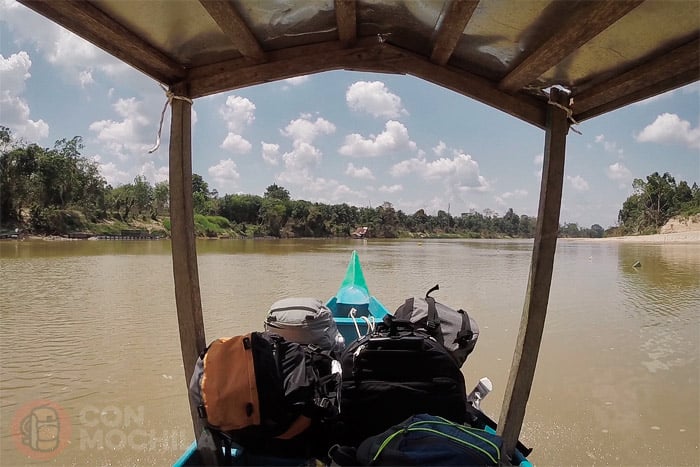
When we arrived, there had recently been heavy rain that had destroyed part of the vegetation on the riverbank, giving everything an even wilder appearance. The river is wide but not very deep. On several occasions, the boat ran aground, and we had to get out and push it, which became the main anecdote of the trip.
From Tanah Ratah (Cameron Highlands) to Kuala Tahan: RM65 (price includes minivan to Jerantut, bus to the port and boat to Kuala Tahan). Ask at the agencies in Tanah Ratah.
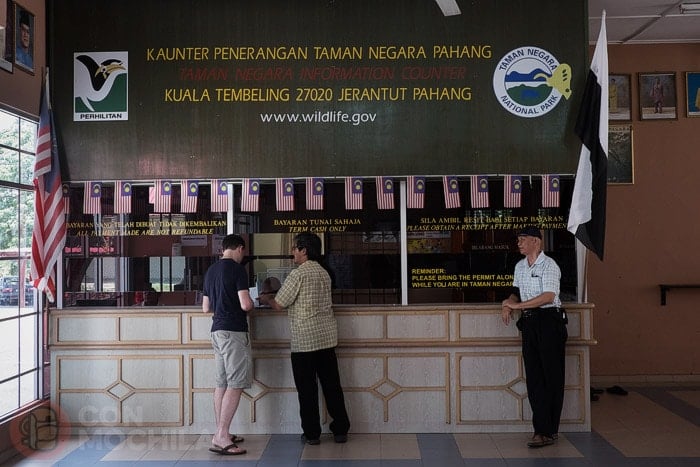
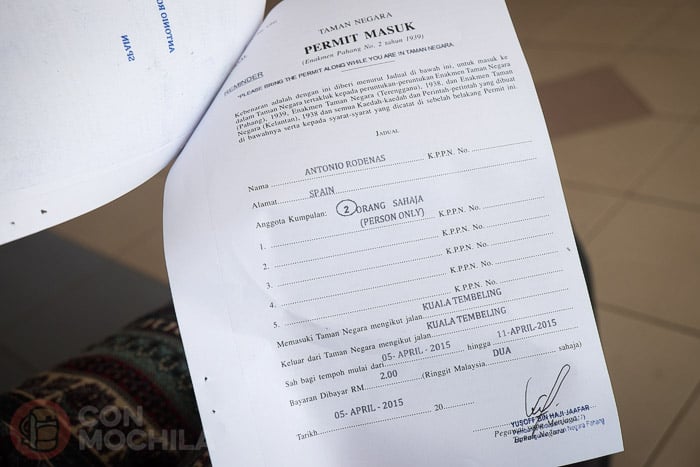
If you want to go by land you will have to take a bus from Kuala Lumpur to Jerantut (19 RM leaving from the Pekeliling station with the Metrobus company) and then from Jerantut you can go by bus or taxi (70 RM approx.) to Kuala Tahan.
Kuala Tahan is the starting point for any activity you want to do in the Taman Negara jungle and on its main street there are, in addition to several restaurants and shops, several agencies where you can book activity packages or treks.
If you are in Kuala Lumpur, you can book a one-day round- trip Taman Negara jungle tour to do almost all the activities (except the multi-day trek).
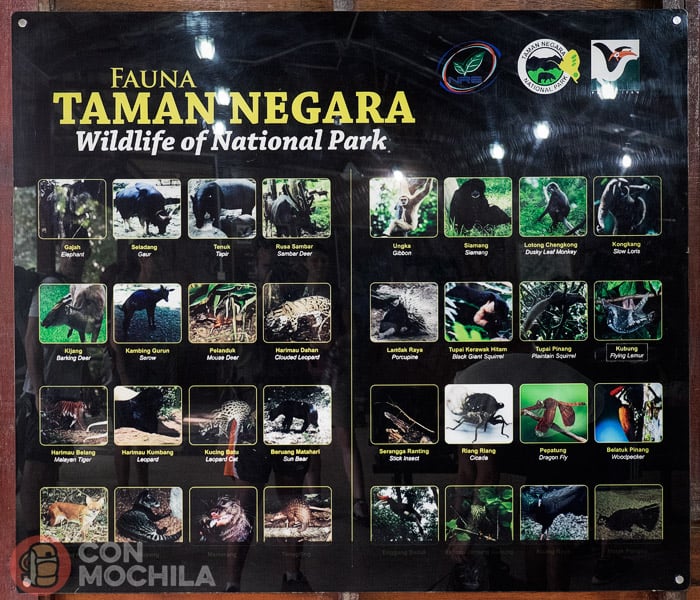
From this network of hanging bridges up to 40 metres high you can enjoy the jungle in a way you can’t from the ground. It’s not a spectacular activity, although it can make you dizzy in some sections. Although seeing animals is really difficult, you can feel like a monkey from up there.
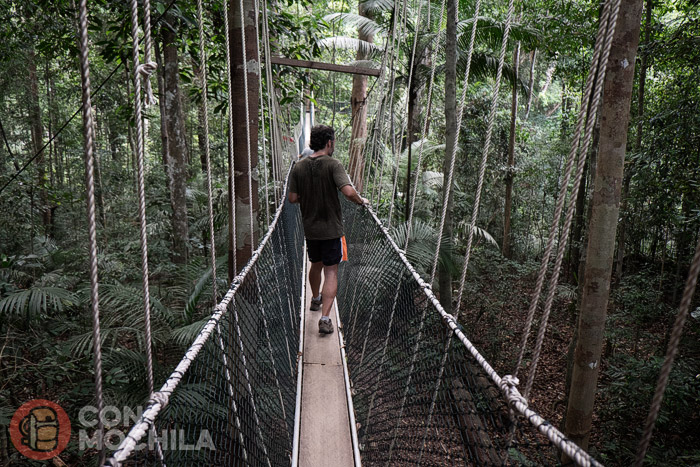
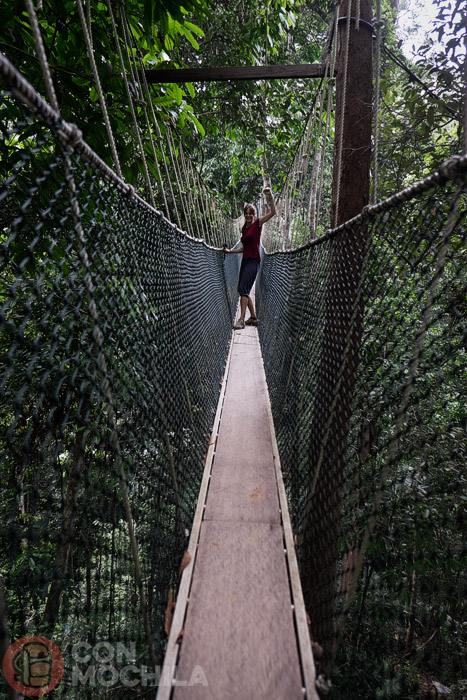
Sailing down the Sungai Tembeling River and seeing life on its banks is another option, although if you arrived at Kuala Tahan by boat it is an activity that you can skip, especially during the hours of full sun…
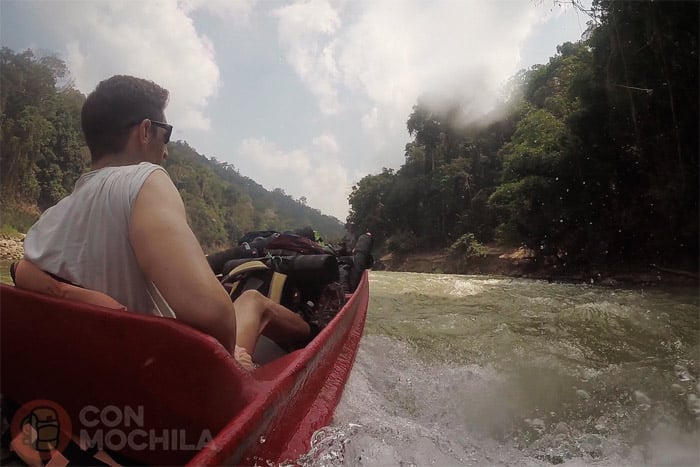
One of the most popular activities, but one we do not have any information about because we did not do it, is visiting one of the Oran Asli settlements and learning, among other things, about their culture, how to shoot with a blowgun etc…
You can go on excursions on your own and without a guide, as there are several marked routes. However, never forget your permit to enter the park and the one for your camera, because they may ask for it at any time. If you don’t have them with you, you will be asked to leave immediately (at least that’s what we were warned).
If you are only going to be in Kuala Tahan for one day, one of the excursions we recommend is to climb Teresek Hill, a walk that takes about three hours to complete, along with the canopy walk. It is an almost circular route that can be started right where the canopy entrance is (there you will see a sign) or just behind the park entrance (where you buy the permits). On this route there are a couple of viewing points from which to observe the jungle from above.
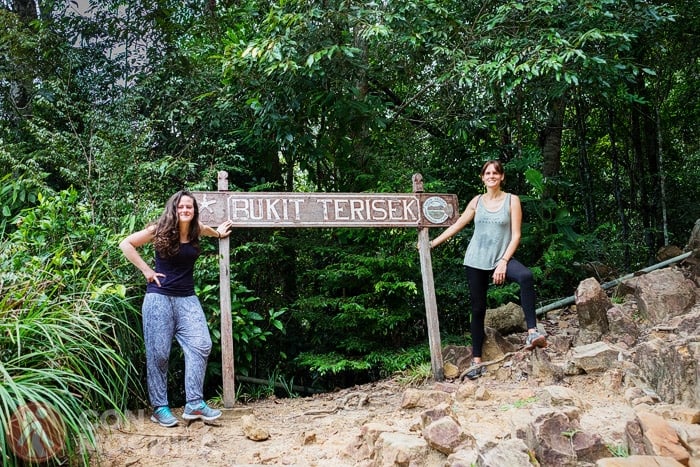
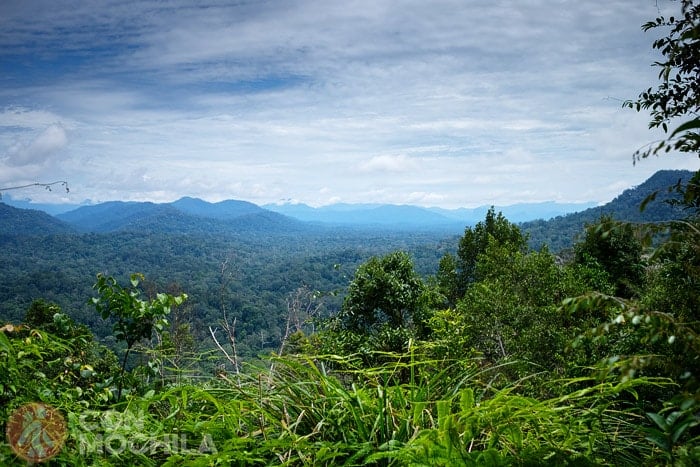
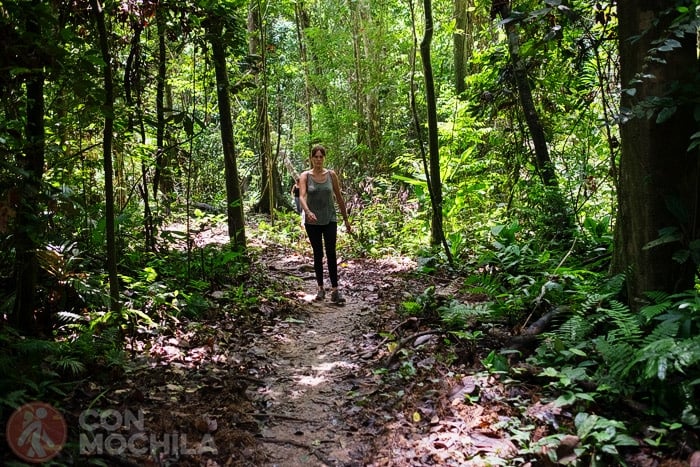
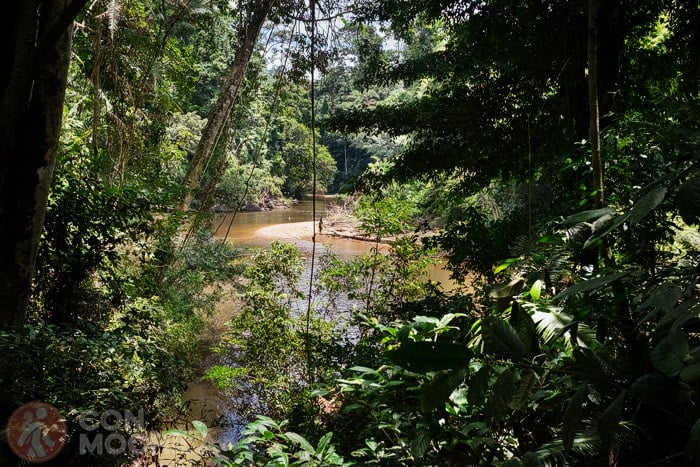
For this activity, where you can discover some nocturnal species, it is necessary to go with a guide or forest ranger.
After visiting one of the agencies that you can easily find in the town itself, we finally decided to do one of their two-day, one-night excursions, as it included almost all the activities that can be done in the area, including a visit to the canopy walk (although we had to pay the entrance fee separately), a boat ride, trekking, and spending the night in a cave.
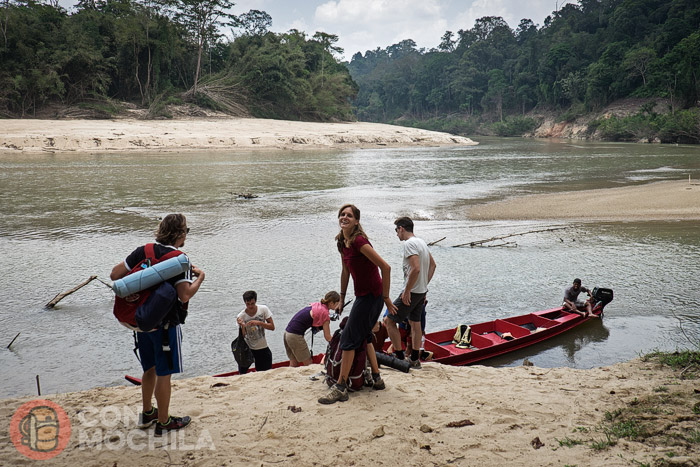
To be honest, Taman Negara was not the park we liked the most in Malaysia because that position is occupied by Bako National Park, but we enjoyed the two days we spent in the jungle 100%. We were lucky to meet a very nice group of people and the experience, despite the humidity, the bees and the mosquitoes, was very good and we recommend it.
Don’t expect to see wild animals, because although elephants, tigers, bears, gibbons and many other species of animals live in the park, they are intelligent enough not to approach areas where humans usually are.
Bear or elephant droppings, a tiger footprint, stories about sightings and sounds of many birds (just some of the 350 species of birds that live there) were the only contact we had with the most impressive wildlife of the jungle, although at night we were lucky enough to see a daring porcupine that came to eat the remains of our dinner, as they say it does almost every night.
However, the thick vegetation, the huge roots that invade the paths, the very tall trees, the sounds of the jungle and the impassibility of some stretches made it an intense experience that we recommend to nature and hiking lovers.
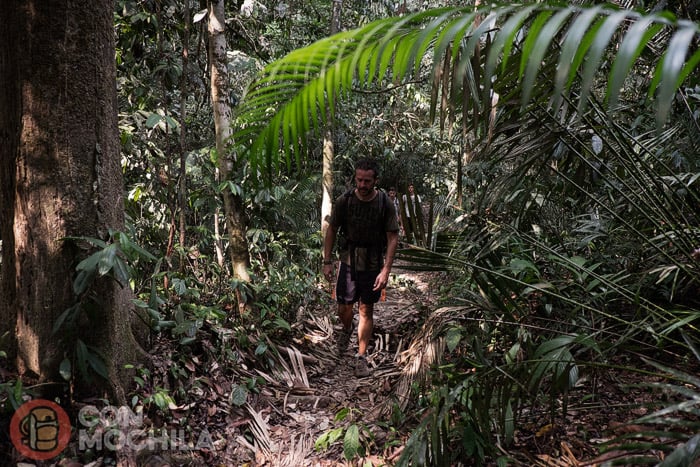
The best part of the two days of trekking was undoubtedly spending the night in a huge cave with two entrances that, according to the guide, could fit up to three helicopters.
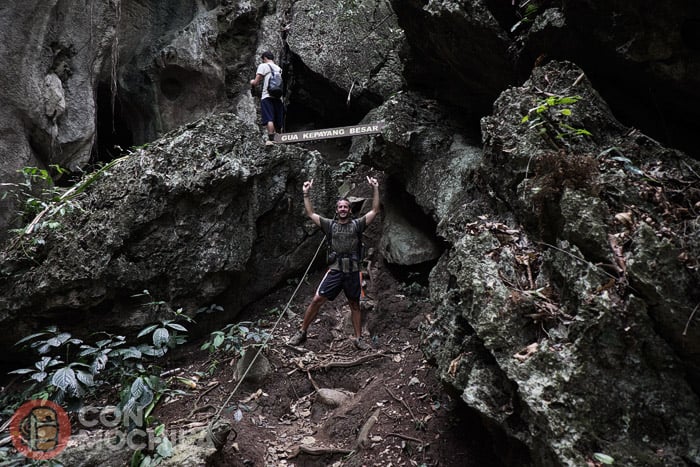
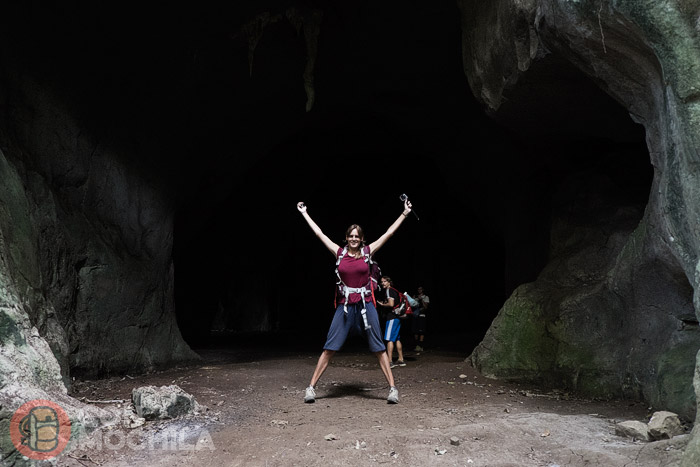
That place gave us the feeling of being inside a hollow mountain and gifted us images like these:
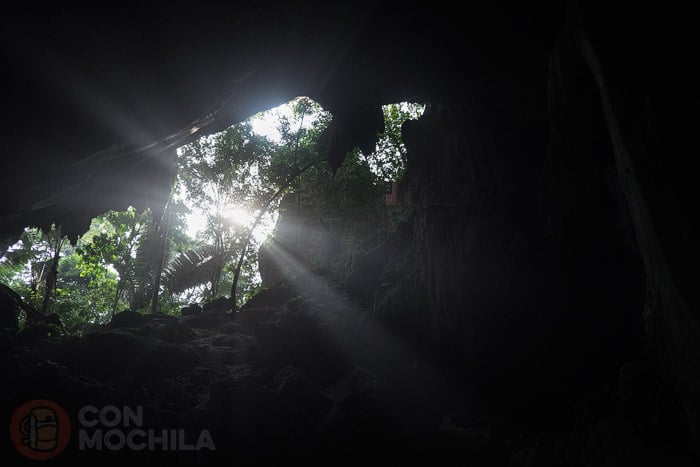
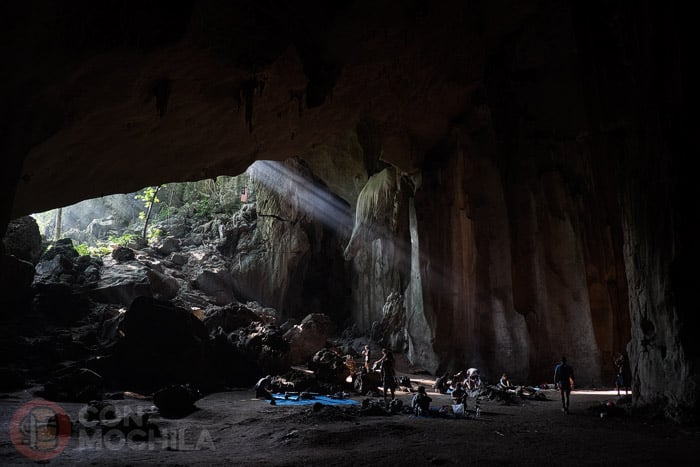
We got there before dark and after fetching water from the river to cook with, the guide prepared dinner for us in a shelter he set up in less than ten minutes.
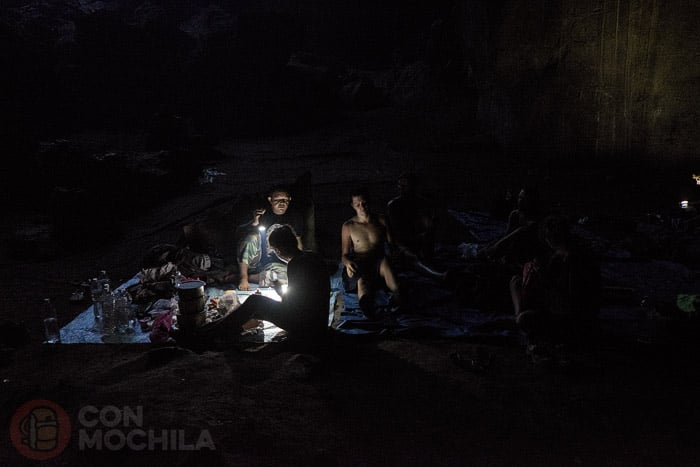
The bonfire that was supposed to keep the bats at bay and prevent them from pooping on us started to go out before the sun came up so, although we didn’t sleep much because the cave floor wasn’t exactly comfortable, the waking experience of some of our companions was much worse…
(Tip to keep in mind if you are going to sleep in the cave: bring a sarong or something with which you can cover your face without suffocating in the attempt- it will save you from having to taste bat fecal matter).
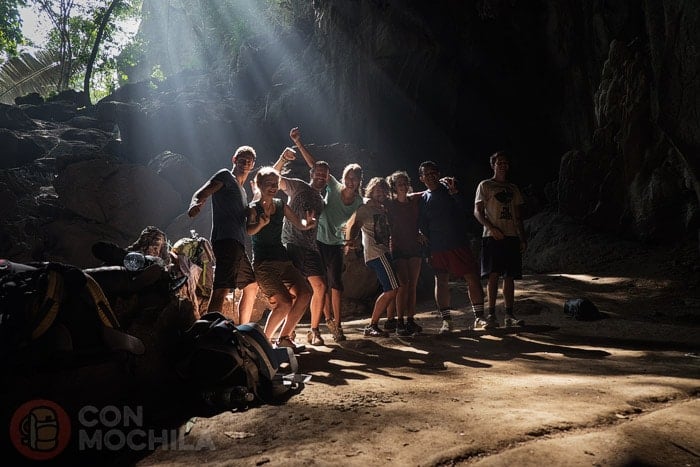
The next day we left early after having breakfast in the cave and walked for about three hours until we reached the river area where we would stop for lunch. With the stifling heat and the impossibility of showering the day before, the first thing we did was dive headfirst into the water and then, once cooled off, we gained our strength back with a solid plate of noodles.
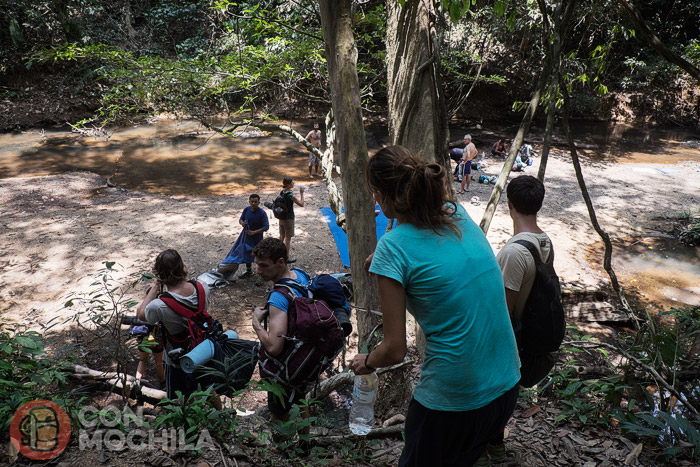
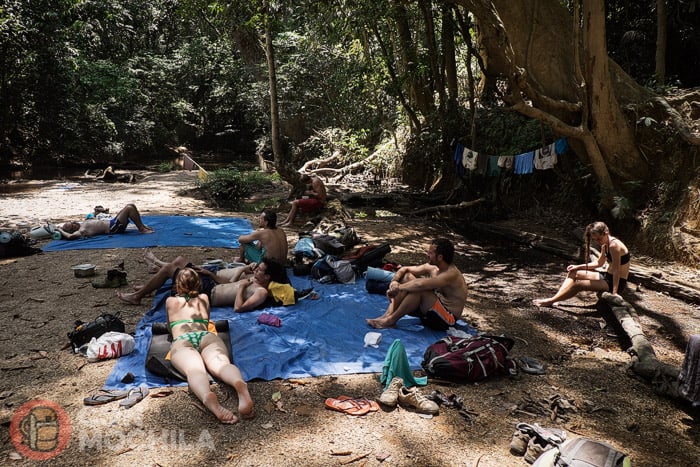
Finally, the afternoon leg was just a short walk to the Sungai Tembeling River to return to Kuala Tahan. There we were picked up by a boat that stopped at an Orang Asil settlement, where we stayed swimming on the riverbank.
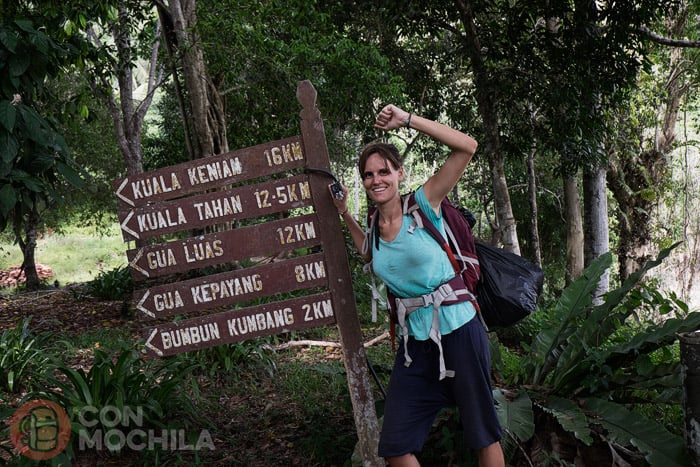
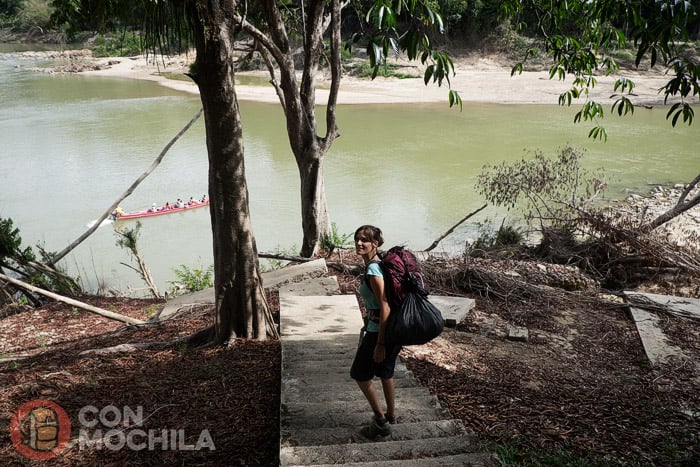
There are a few accommodation options in Kuala Tahan and our choice of Park Lodge was a great one: a quiet place, far from the hustle and bustle of the world (not from the wildlife) and with extremely pleasant hosts: a couple from the village who are dedicated to taking care of their land and their cabins.
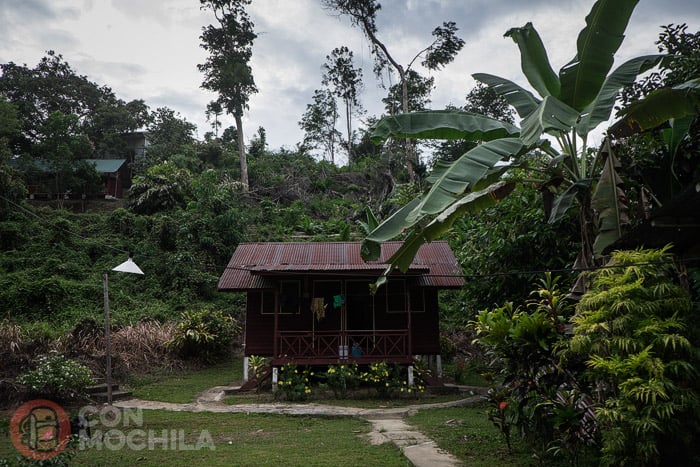
Jab, the owner, had been a guide at the park for 23 years and knows it very well, so he is always willing to give some advice or lend some of his books on the native wildlife. The second time we visited they were even more welcoming to us, if that is possible, so we can’t recommend this place highly enough.